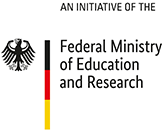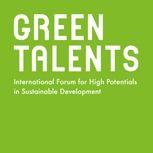Master’s Student in Electrochemistry at Centro de Investigación y Desarrollo Tecnológico en Electroquímica (CIDETEQ), Mexico
Research focus: development of a photoanode based on optical fibres and semiconductors for wastewater treatment
Ana’s research group uses Advanced Oxidation Processes (AOPs). These processes can be understood as wastewater treatment techniques that utilize in-situ generated radicals to degrade organic pollutants in water. The researchers are especially focusing on Electrochemical Advanced Oxidation Processes (EAOPs). In these processes, organic pollutants in wastewater are oxidised and, thus, degraded by oxidants previously generated on the surface of an electrode.
In addition to these methods, Ana also uses photocatalysis. The resulting process Photoelectrocatalysis works as follows: By irradiating a semiconductor catalyst (for example titanium dioxide) with UV light, radicals are generated on the surface of the material. Simultaneously, a potential gradient is applied that promotes charge separation and, thus, improves the rate of degradation of organic pollutants. Therefore, Ana seeks to combine chemical and physical knowledge to develop materials and techniques that can be used not only for wastewater treatment, but also for solar fuels, for example, as the underlying principles are similar for all these applications.
In summary, Ana’s research aims to support UN Sustainable Development Goal 3 (Good Health and Well-being) and Goal 6 (Clean Water and Sanitation). Ana is convinced that by collaborating with experts in photoelectrochemistry, her project offers the opportunity to generate knowledge and technologies that can be useful to other fields such as photocatalysis in general, energy conversion, solar fuels, carbon dioxide conversion, soil and air remediation, and water splitting.
Ana captured the jury’s attention because, as a Master’s student with two years of practical experience as an engineer, she deals with a highly relevant topic that can contribute to the purification of wastewater, and also plays a vital role in many possible solutions to fight climate change.
The research of Ana mainly contributes to the Sustainable Development Goals 3, 6, 7:
Take a look at this video that briefly introduces Ana and her research:









